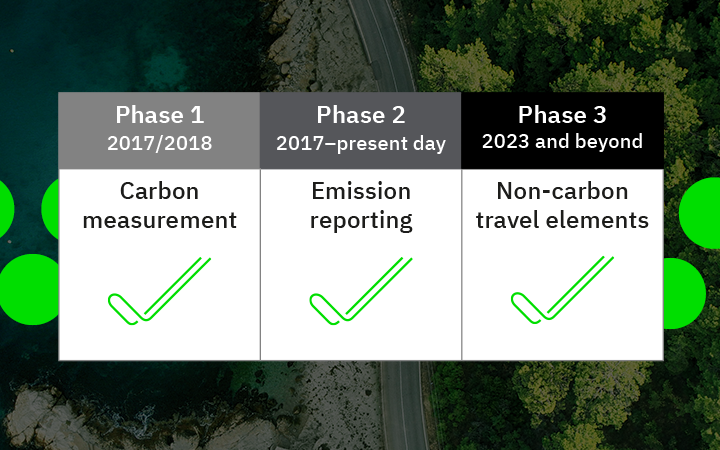Avoiding Carbon Tunnel Vision
Glenn Thorsen, Global Sustainability Lead - FCM Consulting

Sustainable travel is a hot topic right now. Some would argue hotter than it has ever been, and it’s certainly no coincidence that our global temperatures are following the same trend.
Sustainability in our sector is moving into a new era, coined as Sustainable Travel 3.0. It’s a period that will see conversations around the topic move beyond carbon emissions and reporting. Many will agree this time cannot come sooner, as organisations aim to have a more holistic sustainable travel programme.
It’s important that as an industry, travel management does not get Carbon Tunnel Vision.
A brief timeline of sustainable business travel programmes

Phase 1 – 2017/2018
- Carbon measurement is a pure tick box exercise.
- No real concern about detail, accuracy or value.
Phase 2 – 2017-Present Day
- Large strides in emission reporting and managing sustainability strategies, accelerated by pandemic.
- Carbon number now often queried.
- Companies will ask if DEFRA/Ademe/VDR compliant, if aircraft type taken into account or load factors.
- Businesses want to ensure datasets are accurate, detailed and defensible.
Phase 3 – 2023 and beyond
- Shift focus to behavioural change of travellers.
- Incentivise, track and reward more sustainable decisions.
- Deeper details of non-carbon travel elements need to be surfaced and become more accessible.
Why new metrics matter
Looking at the above timeline, the significance of non-carbon data, where travel sustainability is concerned, starts to become clearer.
Historically, travel has not been merchandised with sustainability as a core element of the transaction itself. Where price or timing is usually the driving factor, travel options cannot be differentiated based on carbon or other sustainability drivers. This means that carbon or sustainability metrics are not often datapoints that are embedded into technology layers.
The good news is that this is starting to change. Travellers and programme owners are asking for more insights into how they can make better, more sustainable choices when booking travel. What does this mean? That they need to see more datapoints than just the carbon emission number. It’s natural that non-carbon elements will become increasingly valuable.
We are at an important crossroads for our industry
Corporate travel stakeholders need to find intelligent ways to connect the significance we allocate to sustainability, with the willingness and ability of travellers to change behaviour. This is never an easy task.
In order to avoid Carbon Tunnel Vision, it is vital that we start to give these non-carbon sustainability insights more room to breathe in our booking tools and travel policies.
There are many things that airlines, hotels, rail operators and rental car providers are doing already which can drive this entire category of non-carbon sustainability metrics.
These are the areas that will motivate, engage and drive successful traveller involvement, all helping the transition to lower emissions and more sustainable decision making in business travel in the years ahead.
What are these non-carbon metrics? It’s an area to explore still, across the entire travel ecosystem.